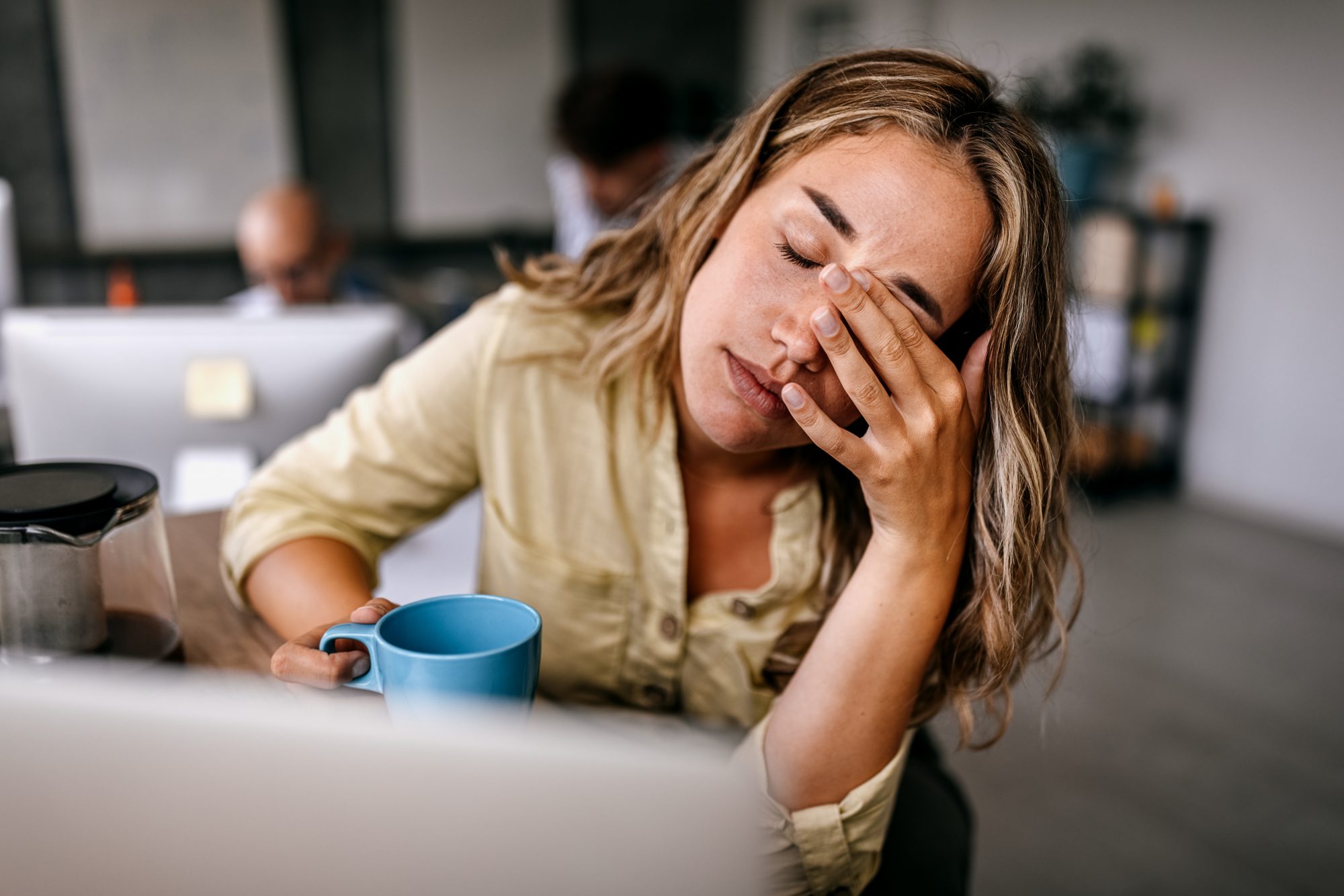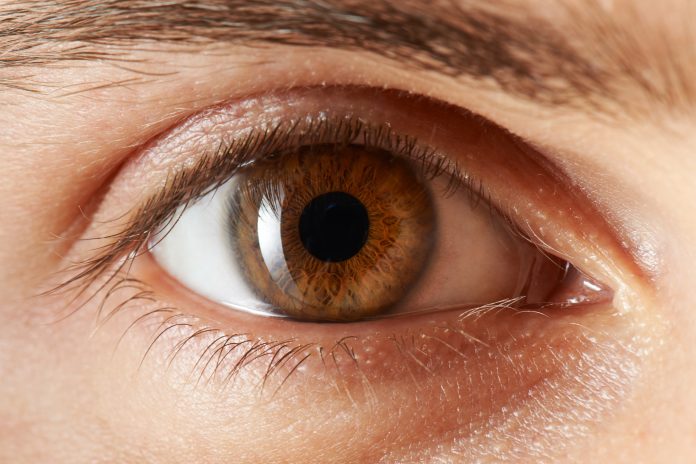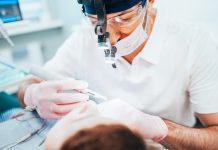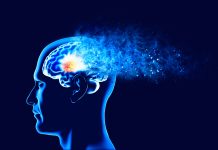Although 17 million people are thought to be suffering from dry eye, the condition is not always easily diagnosed. How can we better understand it?
Your eyes are constantly lubricated by a tear film spread across the eye by blinking. The tear film is more than just water – it is made up of an aqueous component, plus oil, which helps to stop the tears from evaporating, plus mucin – a type of mucus.
Tears are produced in the lacrimal gland, oil is produced in the Meibomian gland, and mucin is produced from goblet cells in the conjunctival membranes. The tear film is being constantly produced and drains away through the nasolacrimal duct into the back of the nose.
Tears contain anti-inflammatory and antibacterial substances which help keep the eyes healthy and infection-free. One important component is the oil which contains omega-3 fatty acids, obtained from the diet. Mucin contains the immunoglobulin IgA which protects mucosal surfaces.
Without enough tears, our eyes are very quickly under stress. The tears lubricate the eye, protect the cornea, wash out dirt and debris, and fend off infecting organisms. Tears also contain chemical messengers such as transforming growth factor-beta, which regulates the growth, development and repair of eye tissues.
Why do people get dry eye?
Dry eye may not be due to one underlying cause – it may be due to a combination of factors.
- Getting older
- Dry eye is more common as we age. Older people have more medical conditions, are more likely to use medication and are also subject to increasing amounts of oxidative stress.
- Sex
- Women are twice as likely as men to get dry eye. Around 60% of postmenopausal women suffer from the condition. The effects of reproductive hormones on dry eye are complex and not well understood. Estrogen tends to reduce Meibomian gland oil secretion. HRT estrogen tends to make dry eye worse.
- Other medical conditions
- Autoimmune conditions such as Rheumatoid Arthritis, thyroid disease and Sjogren’s syndrome can all cause dry eye as our own antibodies attack the cells producing the tears.
- Medication
- Beta blockers can reduce the pressure inside the eye, and antidepressants disrupt nerve signalling in the eye, both of which reduce tear production. Anticholinergics do block acetylcholine receptors and also reduce the tear film.
- Allergic conjunctivitis
- Any form of allergic conjunctivitis such as hay fever (pollen allergy), for example, is associated with reduced tear production and can cause dry eye.
- Contact lenses
- These reduce the amount of oxygen that reaches the cornea and hence, lowers tear production. Soft lenses also absorb moisture from the eye.
- Eye surgery
- Dry eye is common after eye surgery, but often improves over time.
- Smoking
- Noxious substances in cigarette smoke break down the lipid component of the tear film. This can also occur from secondhand smoke.

What are the symptoms of dry eye?
You might think you would know if you had dry eye as your eyes would feel dry. Although this is often the case, sometimes dry eye can be linked to a range of other symptoms and you may not realise you have it.
Here are some of the ways dry eye can affect you:
- Eye symptoms
- Eyes feel gritty, sore and uncomfortable.
- Red eye
- Eyes look pink, or red as they are inflamed.
- Sticky eye
- Eyes may be stuck together when you wake in the mornings.
- Watering eye
- The eyes make more tears in an effort to compensate for being dry.
- Headache
- Tension headache, migraine and cluster headache are all more common in those with dry eye.
- Eye strain
- Eyes feel heavy, tense, it may be hard to keep them open. You may even feel sick or get vertigo.
- Increased light sensitivity
- The fact the cornea is dry affects the way light scatters when it hits the front of the eye – this is called photophobia.
- Neck and shoulder pain
- Sitting at the computer for long periods, especially if you are at the wrong angle is linked to eye strain and dry eye. Staring at the computer for long periods reduces the frequency of blinking.
- Poor vision
- Dry eye can cause blurred vision and other visual disturbances.
– Difficulty with night-time driving – Light sensitivity can lead to problems with glare from other headlights on the road and difficulty with driving in the dark.
- Dry eye can cause blurred vision and other visual disturbances.
- Other
- Dry eye can be worse when it’s cold, windy or in a dry atmosphere such as air conditioning. It may be a problem during or after cycling, or after a hot bath or shower.
Dry eye can cause blurred vision and other visual disturbances
How is this condition diagnosed?
An Eye specialist such as an Optician, Optometrist or Ophthalmologist is the best person to see regarding a possible diagnosis of dry eye. They may perform a variety of tests –
You may be asked to complete a questionnaire about your eye symptoms, which helps the specialist assess and grade the severity of your symptoms.
- Schirmer’s test
- A small piece of filter paper is placed inside the lower eyelids. You close your eyes and wait for 5 minutes. The test shows how far the moisture in the eyes has travelled up the filter paper.
- Tear Lab
- The Tear Lab is a point-of-care test that measures the osmolarity of the tears. Excess salt in the tears causes a high osmolarity which is linked to dry eye.
- Tear Break-Up Time
- A fluorescein dye is added to the eye, and the patient is asked not to blink, while the eye is then examined under a slit lamp. The aim is to measure how long it takes for dried tear spots to appear on the cornea. This is abnormal if it occurs in under 10 seconds. Small punctate corneal erosions are sometimes seen.
- LipiScan
- LipiScan is a specially designed system to assess the function of the Meibomian gland. It can be used to gather details about dry eye. LipiFlow eye treatment uses a sensor placed over the cornea which delivers heat and peristaltic pressure.
- IDRA dry eye scanner
- IDRA is a specially designed scanner which can assess the type and severity of dry eye. It is only available at certain locations.
The ways to treat dry eye
there are personal, medical and medicinal ways to help with dry eye including:
Self-help
Start by doing what you can to keep your eyes healthy. This means:
- Eating a balanced diet
- Like the rest of your body, the eye requires good nutrition for the repair and growth of new cells. It’s always preferable to ensure you are getting the right nutrients by eating a healthy diet, full of fresh fruit, vegetables, and healthy unsaturated fats – rather than relying on supplements. Your body is designed to digest food, absorb it from the gut and use these ingredients for cellular metabolism and regeneration. Supplements, whatever they are made from, may well not be so well absorbed or utilised. Plus, they contain other unwanted ingredients – colourants, caking agents and preservatives. It’s far better to eat a healthy diet than rely on supplements.
- Vitamins, minerals and other supplements
- Specific dietary requirements for the eye include vitamins A, B2, B6, B12, C, and E, plus zinc, lutein and zeaxanthin, and omega-3 fats.
- One diet that makes life easy as it contains all these constituents, is the Mediterranean Diet (MD). Research has shown the MD is beneficial for eye health – for example – it is associated with a lower risk of age-related macular degeneration.
- A 2005 study using data from 39,876 women in the Women’s Health study, found that a high intake of omega-3 fatty acids was protective against the development of dry eye. Women who had had 5-6 servings of omega-3 per week were found to have a 68% reduced incidence of dry eye as compared to those who had one or fewer portions per week. This could be due to a specific effect on the lipids in the tear film. Omega-3 fats are found in oily fish, vegetable oils, flaxseed, nuts and leaf green vegetables.
- Taking omega-3 supplements has not been shown to be beneficial for dry eye. There is no consensus on whether or how to use omega-3 supplements for the condition. For best results, omega-3 needs to be ingested from the diet.
- Drinking plenty of water
- Dehydration leads to reduced intraocular pressure, which hence leads to a reduction in reduction in the production of tears. All adults should drink 2-3 L of water per day.
- Not smoking
- Smoking damages the eye in many ways, increasing the risk of not just dry eye but glaucoma, cataract and retinal detachment. Smokers are twice as likely to lose their vision as nonsmokers.
- Avoid eye strain
- Control your work at the computer – take regular breaks. For example, use the 20:20:20 Rule. Stop every 20 minutes for 20 seconds and look at something 20 feet away. Try to blink more often.
- Adjust your computer
- Make sure the top of the screen is at or just below eye level. Adjust your seat if needed. Turn down the brightness. Use an antiglare filter.
- Reduce the brightness/glare of the lights
- Turn off or turn down the room lighting. Don’t face the window. Keep the blinds or curtains drawn or half drawn.
- Keep the air well humidified
- Use a dehumidifier.
- Use eye drops
- There are a variety of eye drops that act as artificial tears and should be used regularly as per the instructions (see below). There are 3 types of eye drops for dry eye:
- Artificial tears – These lubricate the surface of the eye and help the eye retain its natural moisture. They contain demulcents – substances such as polyvinyl alcohol (PVA), polypropylene glycol (PPG) or glycerin. Also, mineral oil or flaxseed oil to help stop the evaporation of the tear film. Many contain preservatives, but these can cause sensitivity and some patients may be more comfortable with preservative-free drops. Common options are Carmize, Optive, Everclear, Hycosan, Blink Contacts, Clinitas Soothe, Refresh and Sustane.
- Gels – Gels for dry eye are thicker than eye drops but take longer to work. They can cause blurry vision. They are usually used for more severe dry eye.
- Ointments – Ointments are thicker than gels. They are often used for those with more severe dry eye and are best used at night.

When to seek help?
If you have any dry eye symptoms that are persistent, for more than a week or two, or causing distress you should seek help.
See a Pharmacist, Optician or GP, for an assessment, help and advice on how to care for your eyes and soothe symptoms. They will advise you on how to use eye drops, gels and ointments, and/or anti-allergy treatments.
If your symptoms are severe, or not settling, you may need to go to the Eye Unit to see a Consultant Ophthalmologist. You can be referred to your local NHS Eye Department.
Is it urgent?
If the eye is red, painful, and/or you wear contact lenses, phone NHS 111 and ask for an urgent appointment.
Is it an eye emergency?
If this is an eye emergency, call 999 or go to A and E or the Eye Unit without delay.
If this is an eye emergency, call 999 or go to A and E or the Eye Unit without delay
An eye emergency could be:
- Changes in your vision, or seeing waves line
- Pain on looking at the light
- A red eye, bad headache and feeling sick
- Your eyes are red, or dark red
- You have an eye injury – the eye has been pierced
- There is something in your eye such as a tiny fragment of glass, wood or metal
How to soothe dry eyes
Apply a warm compress to the eyes. The heat from the compress opens up the Meibomian glands and stimulates the production of oil, increasing the flow of oil onto the front of the eye. The oil stabilises the tear film as it reduces the evaporation of water.
- Wash your hands for 20 seconds using soap and warm water.
- Using a clean flannel, soak this in hot, boiling water, squeeze it out so it is damp and not wringing wet, lie down, close your eyes, and place this over them. Rest like this for 5-10 minutes. The heat causes the Meibomian gland to discharge oil.
- You can gently massage the top and bottom eyelids with your fingers.
Why not try a specifically designed product such as the Optase moist heat mask? You heat this in the microwave and place the pad over your eyes.
Other advanced treatments
- Punctal occlusion – blocking the drainage site in the eyes so the tears last longer
Moisture chamber glasses or goggles – glasses with a gasket – or cup – that fit around the eyes, preventing wind or dust from getting into the eye. - LiPi flow system – a specialist eye treatment which stimulates oil production by the Meibomian gland.
- Intense pulsed light (IPL) – this can help those with acne rosacea with cauterisation of abnormal blood vessels on the eyelids.
Final thoughts on dry eye
Many people remain unaware they have dry eye disease. Yet a 2021 Southampton study revealed that dry eye reduces the quality of life, affecting mobility, difficulty with day-to-day living and contributing to anxiety and depression. It also affects social and emotional well-being and can be an underlying cause of time off work and lost productivity at work.
I find it fascinating that dry eye can affect us in so many ways from headaches and eye strain, to difficulty driving. Who would have thought that dry eye can actually cause your eyes to water?
If you have any of the symptoms or signs of dry eye disease, perhaps now is the time to see an Eye specialist.
– What could you do to improve the health of your eyes?
For more information
– NHS – Dry eyes
References
- https://www.nice.org.uk/advice/mib47/resources/tearlab-osmolarity-system-for-diagnosing-dry-eye-disease-63499171100101
- https://webeye.ophth.uiowa.edu/eyeforum/atlas/pages/TBUT/index.htm
- https://www.eyeworks.com/eye-care-services/dry-eye-disease-and-treatment/lipiscan-tearlab-lipiflow-dry-eye-diagnosis-treatment/
- https://www.reviewofoptometry.com/article/master-the-maze-of-artificial-tears#:~:text=One%20of%20the%20most%20commonly,for%20long%20periods%20of%20time.
This piece was written and provided by Dr Deborah Lee, Dr Fox Online Pharmacy








